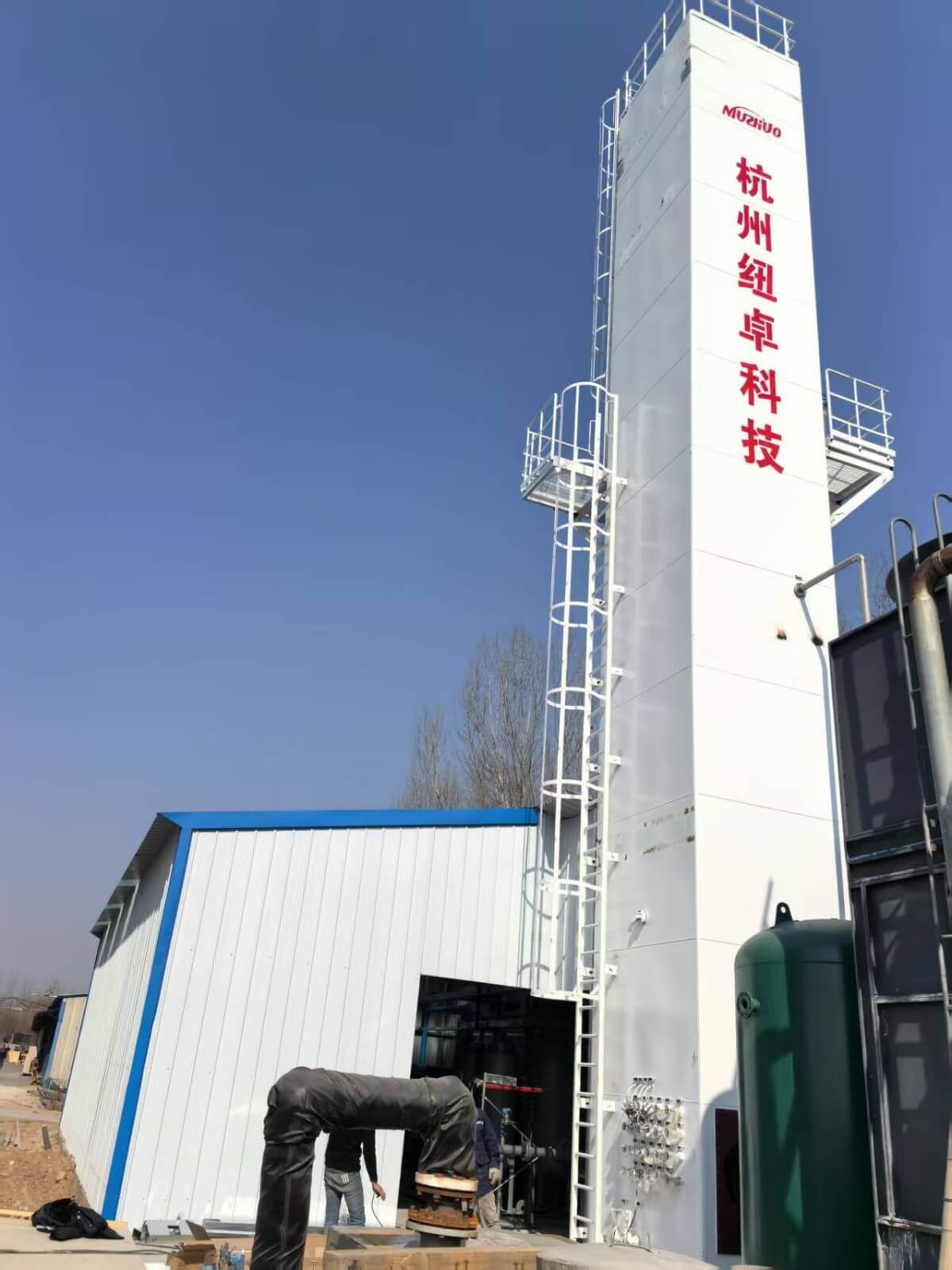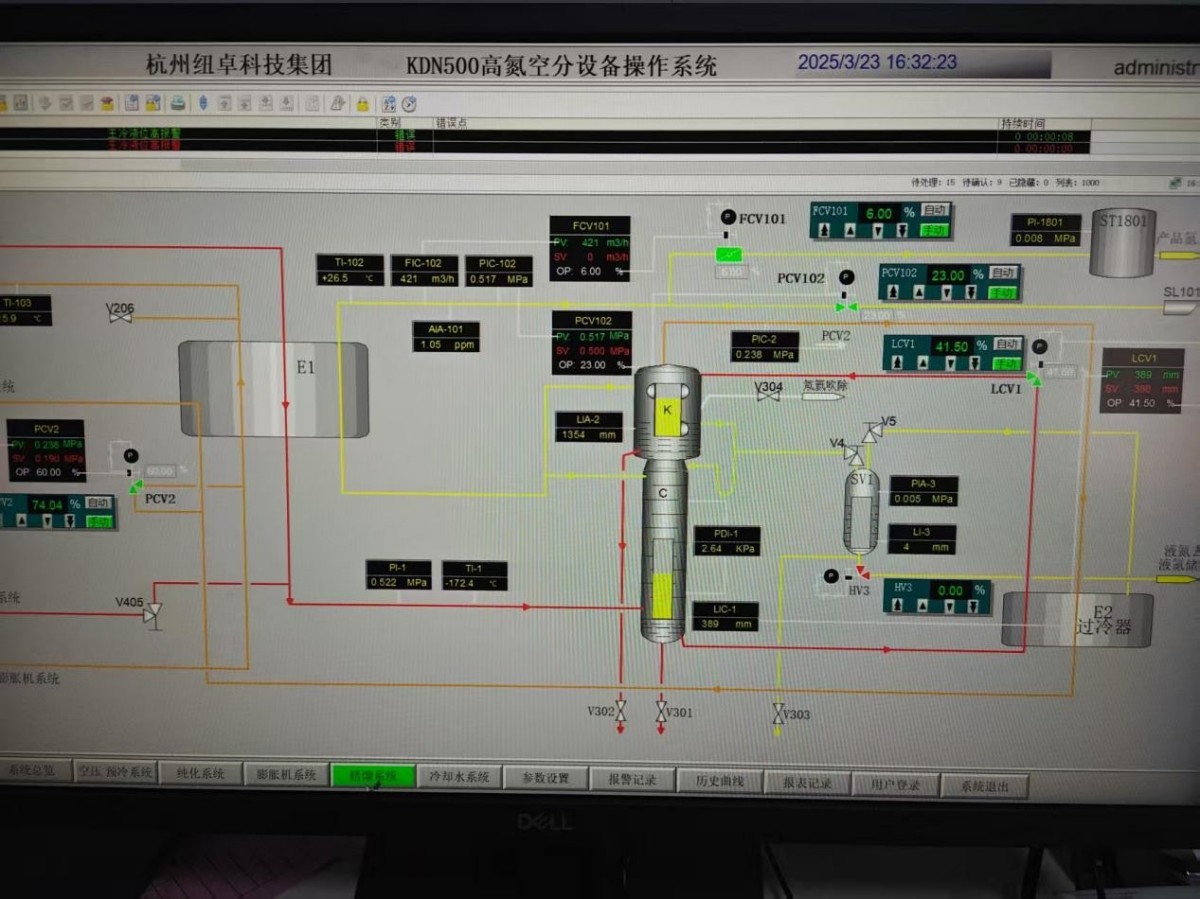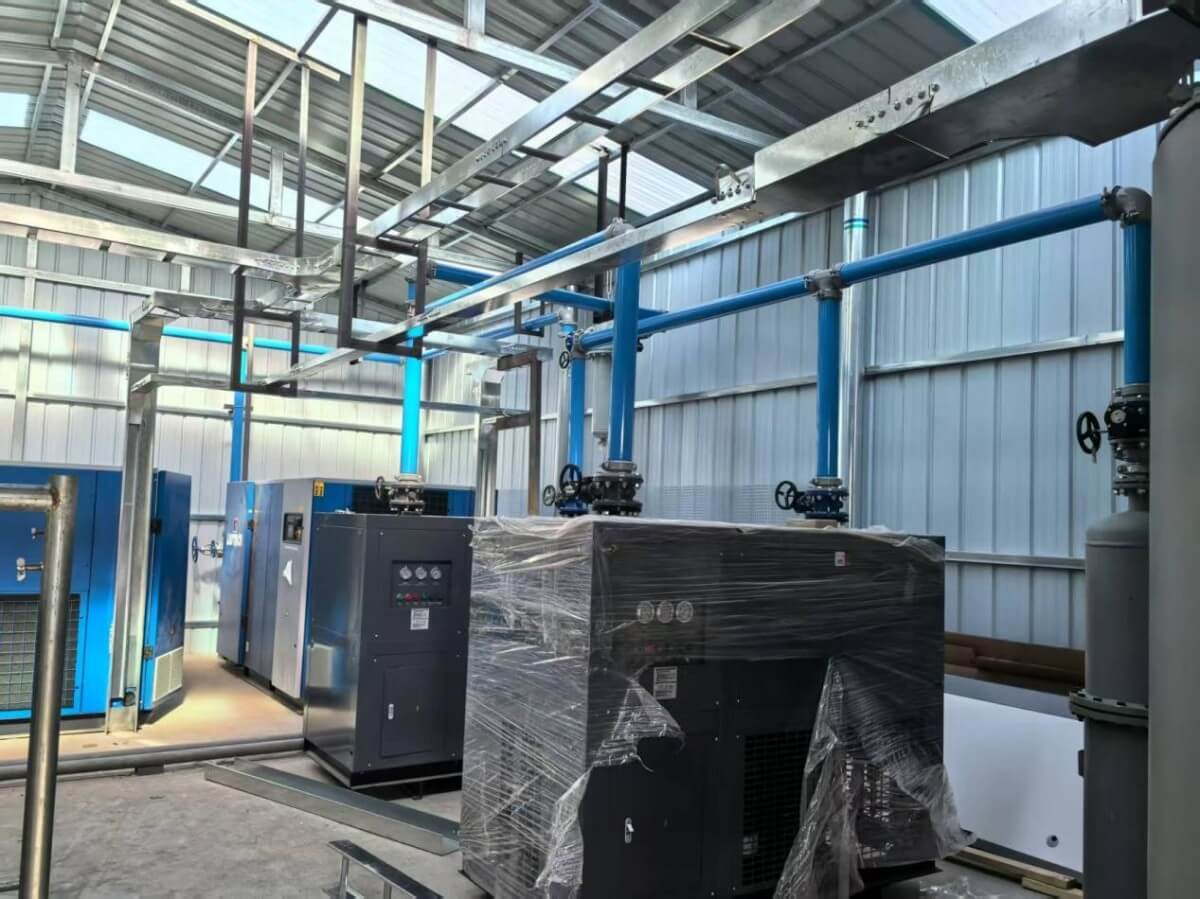Deep cryogenic air separation is a process that separates oxygen, nitrogen and other gases from the air using low-temperature technology. As an advanced industrial gas production method, deep cryogenic air separation is widely used in industries such as metallurgy, chemical engineering, and electronics. The design of complete deep cryogenic air separation equipment requires not only technical accuracy but also compliance with industrial standards and customer requirements to ensure stable operation and economic benefits. This article will discuss the design requirements of complete deep cryogenic air separation equipment, covering core design considerations, engineering points, and precautions in practical applications.
1. Design basic requirements
When designing complete deep cryogenic air separation equipment, the first basic requirements to be determined include production capacity, raw air conditions, product purity and quantity, etc. Depending on the different application fields, the production capacity of complete deep cryogenic air separation equipment varies greatly, generally ranging from hundreds to thousands of cubic meters per hour. In addition, impurities in the raw air, such as moisture and carbon dioxide, need to be removed through a pre-treatment stage to ensure that the equipment can perform deep cryogenic operations under stable and undisturbed conditions. Therefore, the design of the pre-treatment system needs to fully consider the pollutant levels of the local air and the operating environment of the equipment.
2. System design considerations
The design process of deep cryogenic air separation equipment involves multiple key systems, including the compression system, heat exchange system, separation tower system and distillation system. The design of the compression system needs to ensure efficient and reliable provision of high-pressure air suitable for deep cryogenic separation. Heat exchangers are the core components that ensure the realization of the deep cryogenic process, requiring high thermal efficiency. Usually, plate-fin heat exchangers are used to ensure efficient heat transfer and uniform gas flow. At the same time, the design of the separation tower and distillation system needs to meet the purity requirements of the product gas, so the selection of packing, trays and the optimization of distillation process conditions are also particularly important. In the distillation tower, various gas components are effectively separated through repeated heat exchange and condensation evaporation processes, forming high-purity oxygen, nitrogen or argon gases.
3. Automation and control systems
Automation control is an indispensable part of the design of deep cryogenic air separation systems. Modern complete deep cryogenic air separation equipment usually integrates a fully automated control system to achieve precise control of parameters such as temperature, pressure and flow. This not only significantly reduces operational difficulty but also improves the safety and stability of the system. The process control system usually consists of PLC (Programmable Logic Controller) and DCS (Distributed Control System), which collect key parameters in real time for control and optimization, ensuring the stable operation of the equipment under various load conditions. To cope with emergencies, the control system also needs to have fault diagnosis capabilities, capable of promptly detecting potential problems and taking corresponding measures.
4. Energy saving and environmental protection considerations
Energy saving is an important consideration in the design of deep cryogenic air separation equipment. Efficient design of compressors and heat exchangers plays a significant role in reducing energy consumption. In addition, waste heat recovery is a common energy-saving measure, which can utilize the waste heat from the refrigeration process to provide energy support for other processes, thereby improving the overall energy utilization efficiency. In terms of environmental protection, deep cryogenic air separation design needs to fully consider potential environmental pollution problems in the production process, such as noise pollution and exhaust gas emissions. During the design stage, sound insulation treatment and proper exhaust gas treatment plans need to be added to meet relevant environmental protection regulations and standards requirements.
5. Cost-effectiveness and equipment selection
The cost-effectiveness assessment of complete deep cryogenic air separation equipment directly affects its design and selection. Under the premise of meeting production requirements, the selection and scale of the equipment need to be as low as possible in terms of initial investment cost and operating cost. The selection of manufacturing materials, heat exchange efficiency, types of compressors and process flow choices are all key factors affecting cost-effectiveness. Appropriate equipment selection not only reduces initial investment but also effectively lowers maintenance and operation costs in the long run, thereby achieving higher economic returns during the production process.
6. On-site Installation and Commissioning
The design of complete deep cryogenic air separation equipment is not limited to the drawing stage; it also needs to consider the requirements for on-site installation and commissioning. During the installation stage, precise alignment of each component must be ensured to avoid leakage at pipe connections. During the commissioning process, a comprehensive inspection of the operation status of each system is required to ensure that the equipment operates at its optimal condition. Due to the complexity of deep cryogenic air separation equipment, commissioning is usually carried out by a professional engineering team, including multiple tests and adjustments of parameters such as gas purity, pressure, and flow rate, ultimately meeting the design requirements and customer standards.
With the continuous changes in industrial demands and technological advancements, the design of deep cryogenic air separation equipment is also constantly being optimized. Future deep cryogenic air separation equipment will place greater emphasis on intelligence and greenness. By introducing advanced sensing technologies and Internet of Things (IoT) technologies, the equipment can achieve remote monitoring and management, and can more effectively optimize energy consumption. In addition, the application of new materials, such as efficient heat exchanger materials and more low-temperature-resistant structural materials, will further enhance the performance and lifespan of the equipment. In the context of the continuous transformation of the energy structure, deep cryogenic air separation equipment will also be more widely used in the production of clean energy such as hydrogen, contributing to the achievement of the carbon neutrality goal.
For any oxygen/nitrogen needs, please reach out to us :
Anna Tel./Whatsapp/Wechat:+86-18758589723
Email :anna.chou@hznuzhuo.com
Post time: Jun-23-2025
 Phone:
+86-18069835230
Phone:
+86-18069835230 E-mail:lyan.ji@hznuzhuo.com
E-mail:lyan.ji@hznuzhuo.com









